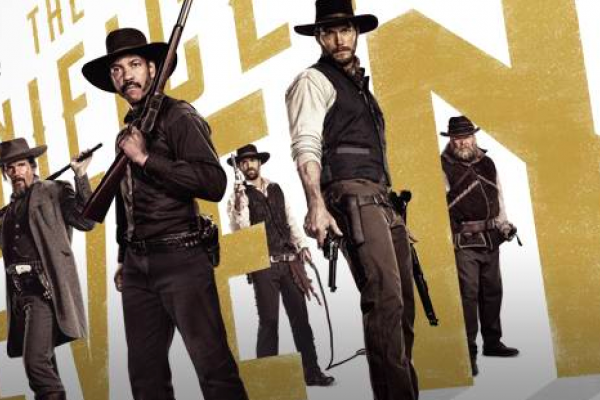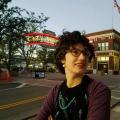Director Antoine Fuqua’s update to The Magnificent Seven is the kind of movie that brings on immediate groans about Hollywood’s aversion to originality. To be fair, those groans are warranted — not only is the film a remake of the classic 1960 Western by the same name, it’s actually a remake of a remake, the original being Akira Kurosawa’s Seven Samurai.
But though it’s an unremarkable action movie in many respects, the film has an interesting eye for symbolism that elevates it above whatever lack of freshness it may suffer from (including a lackluster script). That, combined with a not-so-sly political streak and the movie’s star-studded, diverse cast, make this latest version worth checking out.
In the film, bounty hunter Sam Chisholm (Denzel Washington) is hired by a young widow, Emma Cullen (Haley Bennett) to protect the town of Rose Creek. The town is under threat from robber baron Bartholomew Bogue (Peter Sarsgaard), who’s already tried to scare the citizens into giving him their land by setting fire to their church and killing several townspeople, including Emma’s husband. Chisholm assembles a ragtag team (Chris Pratt, Vincent D’Onofrio, Ethan Hawke, Byung-hun Lee, Manuel Garcia-Rulfo, and Martin Sensmeier) to face down Bogue and his army of lackeys.
From the very start, The Magnificent Seven posits itself not just as a film about good guys versus bad guys, but a story about downtrodden and disenfranchised people versus an oppressor. On a story level, that’s represented by the scared, victimized townsfolk of Rose Creek. But more importantly, it’s there in the casting choices for the heroes— a black man, leading a group that includes Mexican, Native American, and Asian characters — against an entitled white man whose authority rests solely in paying other men to do his dirty work.
Rose Creek’s burned-out church serves as the film’s other notable symbol. Bogue has his men set a church ablaze in the first scene, right after making a speech equating democracy with capitalism and capitalism with divine right. In effect, he’s destroying the town’s symbol of faith to impose his own poisonous beliefs. But the church doesn’t burn down. Though damaged, it remains standing, and serves as a place of community, prayer, and sacrifice throughout the film. It’s a symbol of the town’s resiliency, to be sure — but also a metaphor for the contemporary church, and its imperfect but driven members who serve God through serving each other.
Unfortunately, though The Magnificent Seven does manage to make some solid statements, the film’s writing leaves much to be desired. The movie is chock-full of potentially interesting characters with backstories worth exploring, but True Detective scribe Nic Pizzolato and co-writer Richard Wenk never go beyond the broadest details, sometimes hinting at interesting tidbits that then go nowhere. At best, it provides cliches and obvious story beats. And in the case of its characters of color, that lack of complexity veers dangerously close to stereotype territory.
While The Magnificent Seven is far from groundbreaking filmmaking, it shouldn’t be written off entirely. Yes, it’s a basic revenge tale with broadly drawn characters and plot points you don’t need an eagle-eyed scout to see coming. But the film also manages occasional moments of real insight and relevancy that have the capacity to spark dialogue. Those may be nuggets of gold in a pile of dust, but those nuggets are worth searching for.
Got something to say about what you're reading? We value your feedback!

